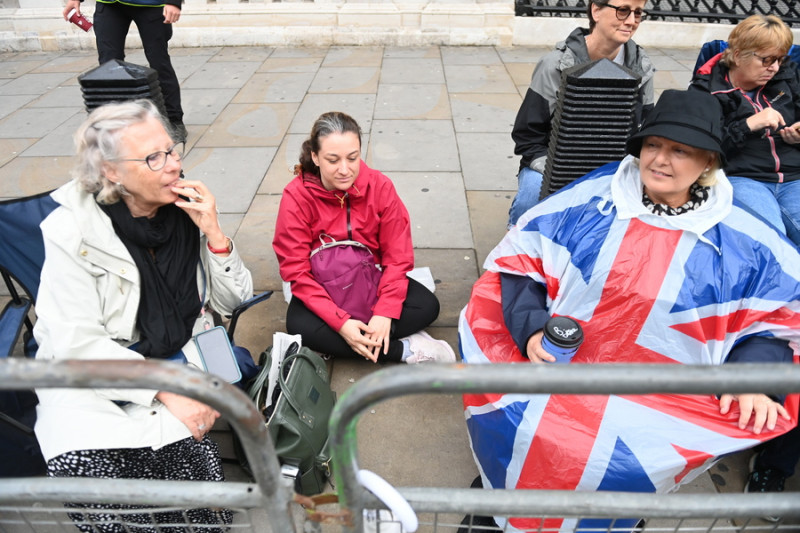The casket has been placed on a raised plinth, covered with the royal banner and upon it have been deposited the Imperial Crown, royal orb and royal sceptre.
London, Thanasis Gavos
Thousands queue for popular pilgrimage of Elizabeth’s body
The long queue that has formed alongside the south bank of the Thames has been continuously renewed by people who want to say goodbye in person to Queen Elizabeth, whose coffin has been in Westminster Hall since Wednesday afternoon.
At its maximum length in the evening and overnight on Wednesday the queue stretched to about 6km. Until now the last people in line had to wait for more than six hours.
The Ministry of Culture, which has assumed the responsibility of managing the process, has provided for a maximum length of 16 kilometers and a waiting time of 36 hours.
1,000 caregivers are available per shift to provide guidance and assistance to anyone who needs it. Cafes, canteens, restaurants, theaters and other buildings along the route remain open for anyone who needs to use the toilet or eat and drink.
Numbered wristbands available allow everyone to return to their place in line afterwards.
Those entering Westminster Hall stand facing the coffin for a few seconds and bow in silence.
The coffin has been placed on a raised plinth. It is covered with the royal banner and upon it are deposited the Imperial Crown, the royal orb and the royal sceptre.
Every 20 minutes, soldiers from units serving the royal house alternate in the performers’ positions. Two of them fainted, causing the BBC to briefly interrupt its continuous live broadcast of the popular pilgrimage.
The pilgrimage will continue until 6.30 am local time on Monday. However, the queue will close when the authorities estimate that whoever is added last will not have time to enter Westminster Hall.
Overnight, meanwhile, the first rehearsal took place for the funeral with head of state honors to be held at 11am on Monday.
The funeral with head of state honors, with its grandiose ritual, in the United Kingdom is about monarchs.
However, there have been 12 occasions when this maximum honor was decided to be awarded to non-blue-blooded Britons.
The most recent case was the funeral of Winston Churchill in 1965. Before him with head of state honors, Isaac Newton (1727), Lord Nelson (1806, when he was killed in the Battle of Trafalgar), Duke of Wellington (1852, because of his victory over Napoleon at Waterloo), Lord Palmerston (1865) and William Gladstone (1898).
Read the News today and get the latest news.
Follow Skai.gr on Google News and be the first to know all the news.
I am currently a news writer for News Bulletin247 where I mostly cover sports news. I have always been interested in writing and it is something I am very passionate about. In my spare time, I enjoy reading and spending time with my family and friends.











